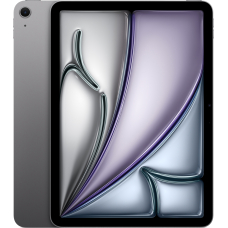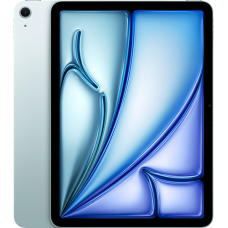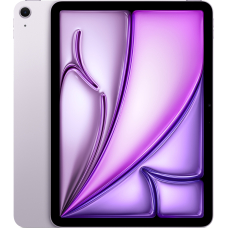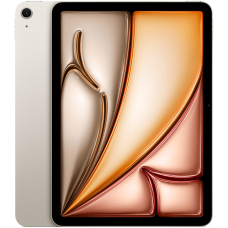Menu
iPad Air 13 2024 512 GB buy tablets - deals availability now
Differences Apple iPad Air 13 2024 from the other Ipad?
Almost a year and a half after its predecessor's release, the iPad Air 13 has hit the market. Let’s analyze both models and find out what innovations the latest version offers.
Design
One of the key features of the 2024 iPad is the new 13-inch screen option, allowing users to choose between two tablet sizes — 11 or 13 inches. The weight of the 11-inch model remains virtually unchanged, while the larger version has slightly increased its weight to 618 grams, which is natural for a device with a larger screen. The 13-inch tablet is ideal for watching videos and conveniently working with documents. Its dimensions are 280.6 mm in length and 214.9 mm in width.
Both models retain the recognizable design features of their predecessors: sharp, angular edges, flat sides for attaching the Apple Pencil, and anodized aluminum in various colors. Both tablets are well-built, but the main changes concern the placement of the cameras and buttons. In the 2024 version, the FaceTime camera has been moved to the long side of the device, making it more convenient for use in landscape mode.
Display
Both devices feature Liquid Retina IPS LCD displays with a 60 Hz refresh rate, ensuring high clarity and brightness of the image. This display provides a realistic color palette and good viewing angles, but the lack of HDR support may disappoint users accustomed to video and photos with a high dynamic range.
The main difference between these models lies in the display sizes. The previous version has a 10.9-inch screen with a resolution of 2360 by 1640 pixels and a brightness of up to 500 nits, making it suitable for everyday use and entertainment. In contrast, the new model boasts a 13-inch screen with a resolution of 2732 by 2048 pixels and a brightness of up to 600 nits, delivering brighter and sharper images. This makes it perfect for multitasking, working with graphic applications, and comfortably viewing media content on the larger screen.
Specifications
In 2024, the main innovation is the transition to the M2 processor, offering a 50% performance increase compared to the M1 chip used in the previous version. This upgrade significantly enhances the device's power and efficiency in handling resource-intensive tasks. This is especially noticeable in graphics-related tasks, such as video editing or gaming. The tablet also supports faster neural processing, improving machine learning functions and augmented reality performance.
One of the most notable improvements is the increase in built-in storage. In the new iPad Air (2024) configuration, the minimum capacity is 128 GB, which is double the 64 GB offered in the 2022 model. The new model's maximum storage capacity has been increased to 1 TB, providing much more flexibility for users who need to work with large files and projects.
Both versions support the latest iPadOS 17.4 operating system.
Camera
As for the camera, the main changes are minor: both tablets are equipped with a 12-megapixel main camera with an f/1.8 aperture. However, the front camera received an important update in terms of usability. In the new version, it has been moved to the long side of the device, making video calls in landscape mode much more comfortable.













 0
0
















